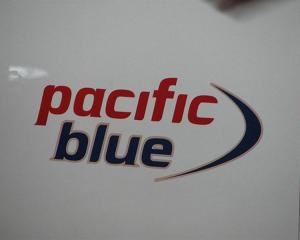A disagreement between three expert witnesses on whether anti-icing procedures should have been carried out dominated court proceedings yesterday in Queenstown in the prosecution of a pilot charged with operating his Pacific Blue Boeing 737 jet carelessly.
Pilot witnesses Stuart Julian and Fred Douglas stated in their evidence if faced with the same conditions as the pilot flying from Queenstown to Sydney on June 22, 2010, they would not have applied "anti-ice" to the aircraft, defence lawyer Matthew Muir said.
This followed the evidence of retired Air New Zealand pilot Colin Glasgow, who in his evidence stated in the circumstances the precautionary measure should have been part of the pilot's preparation.
"I've experienced airframe icing significantly to the point they cannot operate."
The court case in its eighth day is a result of the Civil Aviation Authority's allegations that a 54-year-old pilot, of Auckland, operated an aircraft carelessly when he breached the airline's rule flights could only leave at least 30 minutes before the evening civil twilight time of 5.45pm.
"It was 3deg above zero, there was rain and a cold front was coming through ... if you are not going to consider anti-ice in those conditions I have no idea when you are going to use anti-ice," Mr Glasgow said.
"In a critical situation even 30 seconds can degrade an aircraft in icy conditions."
However, Mr Muir said both captains Julian and Douglas had never used anti-ice in their respective careers and would not have in this situation.
"He [Douglas] would not have applied a wind anti-ice increment on this departure." Mr Muir said three experienced pilots had told the court the Boeing had low susceptibility to icing.
Mr Glasgow said the pilots' stance, including the pilot in question, were "very unreasonable" and he was surprised. He said captains Julian and Douglas' respective airlines did not allow for pilots to use the anti-ice function at their discretion in order to remove "that margin of error".
Meanwhile, Mr Muir in his cross-examination of Mr Glasgow's evidence for the third day running said the automatic cockpit warnings "don't sink, don't sink" were "cautionary" and at the top end of a pilot's warning system.
"I don't wish to leave the impression it's [the warning] an extreme event. It's an unusual event and it would have been a distraction," Mr Glasgow said.
"It has never happened to me. It is unusual to get all three of those warnings, cautions, whatever you want to call them, in a time span of maybe a minute and a-half. That's unusual."
The defendant had received two warnings from the Enhanced Ground Proximity Warning System (EGPWS), one of which was of mode six "Bank up, bank up" and mode three "Don't sink, don't sink".
The system operates - from most urgent to the least urgent - on warnings, cautions and advisory levels. The defendant's June 22, 2010, computer calls were of advisory and caution levels.



